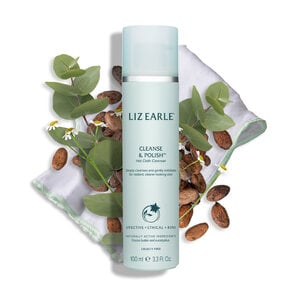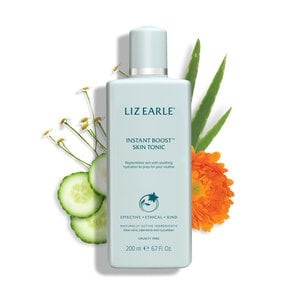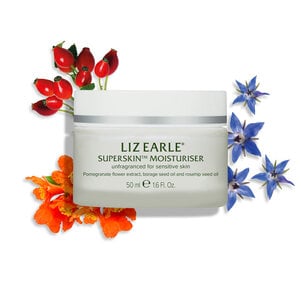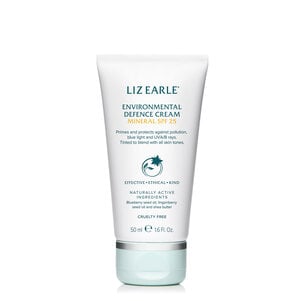
How to help reduce the appearance of redness on your face
May 22, 2024
3 min read
Have you wondered why your face looks red? It’s a common concern for many of us. If you’re finding your complexion looking flushed and red, there could be several factors that are the culprit – or even be a combination of a few. From environmental stressors to sun exposure, from hormones to skincare routine.
Whether it's occasional flushing, persistent redness, or sensitivity-induced irritation, facial redness can be bothersome. But fear not! With the right understanding and a tailored skincare routine, you can help leave the skin feeling calm and soothed.
It’s important to feel confident in your own skin – and redness on the face can be a daily struggle. Here, we’ll take a closer look at why your skin may be looking flushed and more importantly, tips and ideas on how you can effectively help reduce the appearance of facial redness. Addressing the appearance of redness starts with understanding your skin's unique needs – and these can be both internal and external.
Why does your skin look red?
Understanding the underlying causes of facial redness is crucial when it comes to managing the appearance effectively. Here are some of the most common culprits:
Weather conditions: Extreme weather conditions, including cold, windy weather, can cause skin to appear dry and red.
Sensitive skin: If your skin is prone to sensitivity, it may react to environmental triggers such as harsh weather, pollution, or certain skincare products, resulting in the skin looking red and feeling irritated.
Rosacea: Rosacea is a chronic skin condition characterised by redness, flushing, and visible blood vessels, often accompanied by acne-like bumps and eye irritation. While the exact cause of rosacea is unknown, factors such as genetics, sun exposure, and triggers like spicy foods or alcohol can exacerbate symptoms.
Allergic reactions: You can become allergic to products incl. skincare products or environmental allergens, such as pollen and pet dander at any time; which can trigger an allergic reaction.
Excessive sun exposure: Prolonged exposure to UV rays can damage the skin's barrier function, leading to inflammation, redness, and increased sensitivity. Always use a high SPF and reapply frequently, especially when sun bathing, swimming and sweating.
Skin conditions: Certain skin conditions like eczema, psoriasis, and dermatitis can manifest with red, inflamed patches on the face - these require specialised care and treatments. If you are concerned you may have the symptoms for one of these conditions, you should visit your GP, or see a dermatologist who can help with a diagnosis.
What does facial redness look and feel like?
Facial redness can manifest in various forms and its severity may vary from person to person, ranging from mild flushing to persistent redness. Here are some common signs to help identify the cause and what might help:Flushing: Sudden and temporary redness often triggered by emotional factors, temperature changes, exercise or exertion, hormonal change (especially around menopause) or even spicy foods. Flushing not brought on by the factors listed here should be checked with your GP.
Dryness: Facial redness can be associated with the appearance of dryness and flakiness leading to skin feeling tight and uncomfortable. Speak to your GP to rule out eczema or another skin condition if you’re experiencing suffering from dry, red skin.
Bumps and pimples: Acne can sometimes cause areas of redness to appear on the face. Speak to your pharmacist or GP if you suspect acne may be the cause.
Persistent redness: Chronic redness, particularly in the central areas of the face such as the cheeks, nose, chin, and forehead, may indicate underlying conditions like rosacea. This should be checked with your GP.
Inflammation: Swelling, tenderness, and irritation accompany facial redness, making the skin feel sensitive and uncomfortable.
Visible blood vessels: In severe cases of rosacea, visible blood vessels (telangiectasia) may appear on the surface of the skin, contributing to a flushed appearance.
Itching and burning: Facial redness often comes with sensations of itching and burning, signalling underlying inflammation and sensitivity. Red skin can sometimes feel warm to the touch and may even sting. This could indicate excessive sun exposure, exposure to an allergen or a skin condition.


How can you help reduce the appearance of redness on our face?
Facial redness is a common skincare concern that can affect people of all ages and skin types. By understanding the causes and characteristics of redness and adopting a tailored skincare routine and lifestyle choices, you may help the appearance of redness and feeling of sensitivity. Now that you understand the causes and characteristics of facial redness, let's explore actionable ways you may help to reduce the appearance of redness:Identify triggers: Keep a diary to track potential triggers such as certain foods, skincare products, environmental factors, or lifestyle habits.
Anti-inflammatory ingredients: Look for skincare ingredients known for their soothing properties, such as chamomile, aloe vera, green tea, and oat extract. These botanical extracts may help reduce the appearance of redness and reduce the feeling of skin sensitivity.
Practice gentle skincare: Opt for fragrance-free, suitable for sensitive skin skincare products formulated for sensitive skin. Avoid harsh exfoliants, alcohol-based toners, and abrasive cleansing techniques that can further irritate the skin. If you are prone to the appearance redness, try switching to a more gentle cleanser like our award-winning Cleanse & Polish™ Hot Cloth Cleanser. This award-winning formula, enriched with naturally active ingredients such as eucalyptus and cocoa butter, effortlessly removes impurities whilst providing hydration. Avoid harsh scrubbing or abrasive products that can exacerbate the appearance of redness.
Hydration is key: Hydrated skin is happy skin! Opt for a soothing, alcohol-free toner like Instant Boost™ Skin Tonic Toner. Formulated with aloe vera, cucumber, and vitamin E, this revitalising tonic rebalances your skin's pH levels and provides a refreshing burst of hydration.
Cooling techniques: Apply cool compresses or chilled skincare products to soothe uncomfortable feeling skin and reduce the appearance of redness. Refrigerate your toner or moisturiser for an extra refreshing treat.
Mindful lifestyle choices - and make up: Incorporate stress-reducing practices like yoga, meditation, or deep breathing exercises into your daily routine. Stress can exacerbate facial redness, so prioritising self-care and relaxation is essential for maintaining a calm looking complexion. If you use make-up to conceal redness, opt for products labelled as non-comedogenic and designed for sensitive skin. Be gentle when applying and removing make-up and keep hands, brushes and sponge applicators clean to prevent further irritation.
Moisturise wisely: Choose moisturisers formulated with soothing ingredients such as aloe vera, chamomile, and calendula. Our Superskin™ Moisturiser unfragranced, for sensitive skin is a lightweight yet nourishing option without any fragrance designed to calm and comfort reactive feeling skin. Massage gently into your skin using upward strokes.
Sun protection: Don't forget sun protection! UV rays can aggravate appearance of redness and exacerbate existing skin concerns. Broad-spectrum sunscreens help shield the face from the effects of the sun and are increasingly featured in moisturisers. Our multitasking Environmental Defence Cream Mineral SPF 25 not only helps provides sun protection, but also helps prime and even out your complexion thanks to its natural tint for all skin tones.
Remember- consult your GP: If you are concerned, have persistent redness or suspect an underlying skin condition, consult your GP.
Be patient: Remember that achieving a reduction in the appearance of facial redness may take time and a bit of experimentation. What works for one person may not work for another, so be patient and consistent with your skincare routine. Often it can be a case of minimising your skincare routine rather than over-doing it and causing more irritation.
While often facial redness is more of a pesky issue than anything too serious, it is essential that you speak with your GP to rule out any underlying skin conditions that may need medical attention and treatment.
If you suspect you have rosacea or acne, seeking guidance from your GP is essential. They can diagnose you and may refer you to a skin specialist (dermatologist) who can provide you with a personalised treatment plan tailored to your unique condition and symptoms. Medical treatments for skin conditions could include topical or oral medication that may help to reduce redness and inflammation. If rosacea symptoms are affecting your eyes, seek urgent medical advice from your GP or call NHS 111.
SHOP THE PRODUCTS






